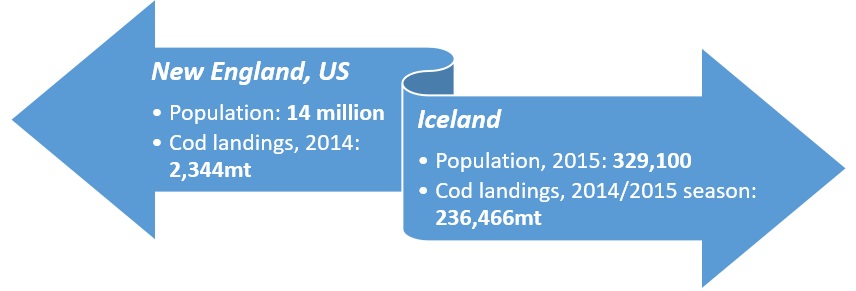Regional Demand and Opportunities for West Coast Groundfish
Our latest project, West Coast Groundfish Regional Market Demand and Opportunities, explored the market demand for U.S. West Coast groundfish in Oregon, Washington, and California. This post is a brief summary of that work. For more, please check out the executive summary of the report.
Background
Faced with plummeting catch levels and fish populations near collapse, many fishing boats left the U.S. West Coast groundfish fishery in the 1990’s and 2000’s. Commercial seafood buyers on the West Coast then turned to other whitefish, including Asian tilapia and Alaskan pollock.
Today, under new management systems, U.S. West Coast groundfish populations have rebounded and are fished sustainably – more than 20 species now rate as a “green, best choice” or “yellow, good alternative” with the Seafood Watch program, and 13 have received Marine Stewardship Council certification. With this conservation success in hand, how does U.S. West Coast groundfish regain a competitive market position and ensure that the recovery story includes economic success for fishermen?
Several studies have looked at the production side of this question, outlining supply chain hurdles and infrastructure issues that keep fishermen from reaping higher prices. This study is the first to look at the demand side of the market: how much whitefish West Coast buyers purchase; what potential there is to sell sustainable, U.S. West Coast groundfish in these regional markets; and how fishermen can increase the price per pound that they receive for their fish.
Methodology
Through a combination of market analyses, buyer surveys, industry interviews, and expert review, Changing Tastes and Wilderness Markets examined the current demand for West Coast groundfish in Washington, Oregon, and California. We identified categories of commercial buyers (e.g., restaurants, retail grocery stores) and types of seafood products that hold the greatest potential to increase economic gain for fishermen. We also explored the key barriers that fishermen will need to overcome to sell more product in these markets.
Results
Our results shows that focusing on selling minimally processed products to grocery and full service restaurant sectors holds the greatest potential to improve sales and profits for U.S. West Coast groundfish fisheries. Consequently, the next logical step is to test these findings. To do so, and help U.S. West Coast fishermen expand into regional markets, we recommend the development and launch of a pilot project. This project would aim to raise commercial buyers’ and suppliers’ awareness of U.S. West Coast groundfish as a domestic, sustainable source of whitefish and prove that these fisheries can provide a reliable supply of local fish to West Coast markets. If successful, it will establish new markets and demonstrate the benefits and availability of West Coast groundfish to buyers and suppliers.
We welcome your feedback on the market report and pilot concept. We hope that this research will stimulate additional conversations and partnerships that can help the U.S. West Coast groundfish fishery become a model of both ecological and economic success.
Prepared with support from:
The David and Lucile Packard Foundation and The Gordon and Betty Moore Foundation
For more of our work with U.S. West Coast Groundfish, please see our previous report, “West Coast Groundfish in California Value Chain Assessment.”



